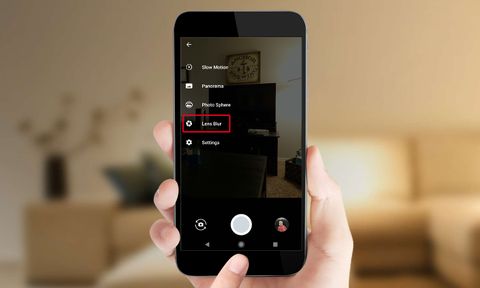
Again, the wide angle figure of 94 degrees is only available in RAW, it will be lens corrected and end up a little narrower.
#GOOGLE PIXEL LENS BLUR PRO#
The Pixel 6 Pro front camera is again ultrawide and like other Pixel models offers to different fields of view, so you can have something closer or something wider - ideal for group shots.
#GOOGLE PIXEL LENS BLUR FULL#
The Pixel 6 has an 8-megapixel front camera and only offers Full HD video capture. The front camera on the Pixel 6 Pro steps up to 11.1 megapixels and supports 4K video. In some instance on the Pixel 6 Pro, you can see the switch in the app when you move from digital to optical - again, you can test by putting your finger over the corresponding lens to see what you're actually looking at. If, in low light, you want higher zooms, it will then switch to the telephoto. This is easy to test - just cover the lens on the rear of the phone to see which it's actually using. Hit the 4x zoom option in low light and you're actually using digital zoom from the main sensor, because the results will be better than from the telephoto in those conditions. Google plays the same trick that others use - like Samsung - of choosing the lens based on the light conditions. While the aperture has dropped to f/3.5, meaning less light gets to the sensor, this isn't uncommon on telephoto lenses.

It means that you get better results using a pinch zoom than if you take the photo and then pinch to magnify the image - and that holds true of the 20x Super Res Zoom system of Pixel 6 Pro. Super Res Zoom is a hybrid zoom system that takes data from multiple frames to improve the upscaling, it basically uses a load of AI to make zoomed images better. There's a 48-megapixel sensor for starters and while the pixels aren't big, that resolution is there to aid the progression out to 20x Super Res Zoom. This isn't the first phone with a telephoto from Google - the Pixel 4 XL offered 2x - but the Pixel 6 Pro is really a step forward in ambition and will give clearer images with greater zoom. The new sensor is thought to be the Samsung ISOCELL GN1 (this hasn't been confirmed), but Google has confirmed that it has a 1/1.31in size, which is much bigger, and a 50-megapixel resolution. The older Pixel models use the Sony IMX363 sensor, with a 1/2.55in size and 12.2-megapixel resolution. This brings about a change like we've never seen before. The big news is that Google has moved to a 50-megapixel sensor, from the 12-megapixel sensor that it has used for a long time. Working left to right you have the main camera, ultrawide camera and then the distinctive rectangular opening for the folded/periscope telephoto. That bar also houses the laser for assisted focus, as well as spectral and flicker sensors, as well as the flash. There are three cameras on the rear of the Google Pixel 6 Pro, in that distinctively-designed Camera Bar stretching across the back of the phone.

Pocket-lint The Google Pixel 6 Pro camera


 0 kommentar(er)
0 kommentar(er)
